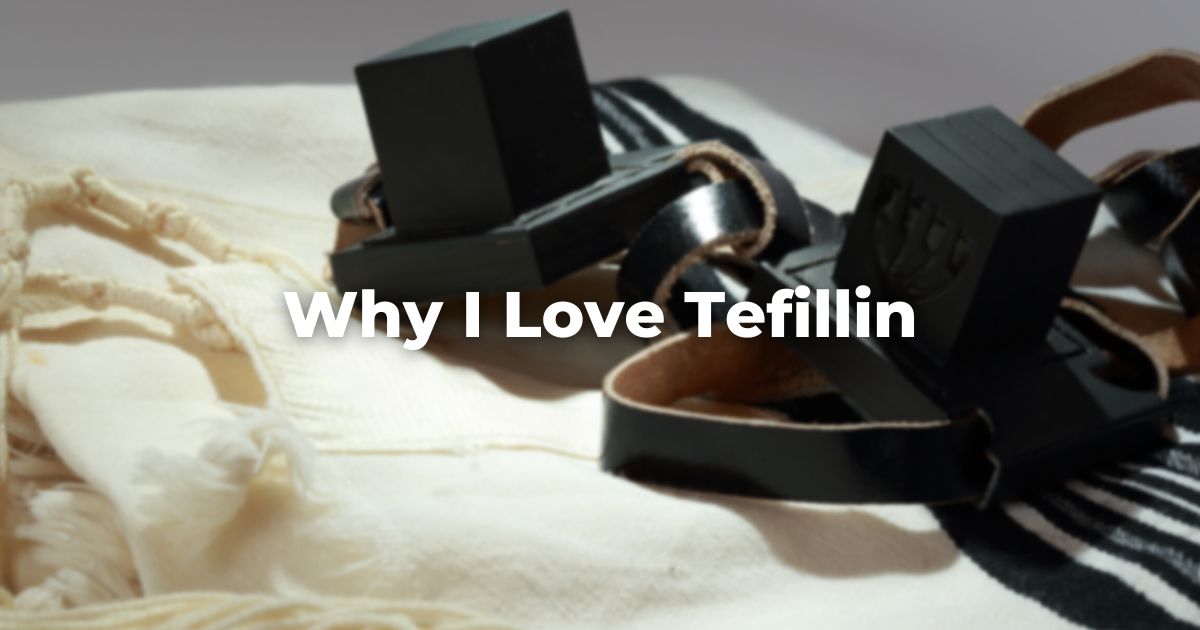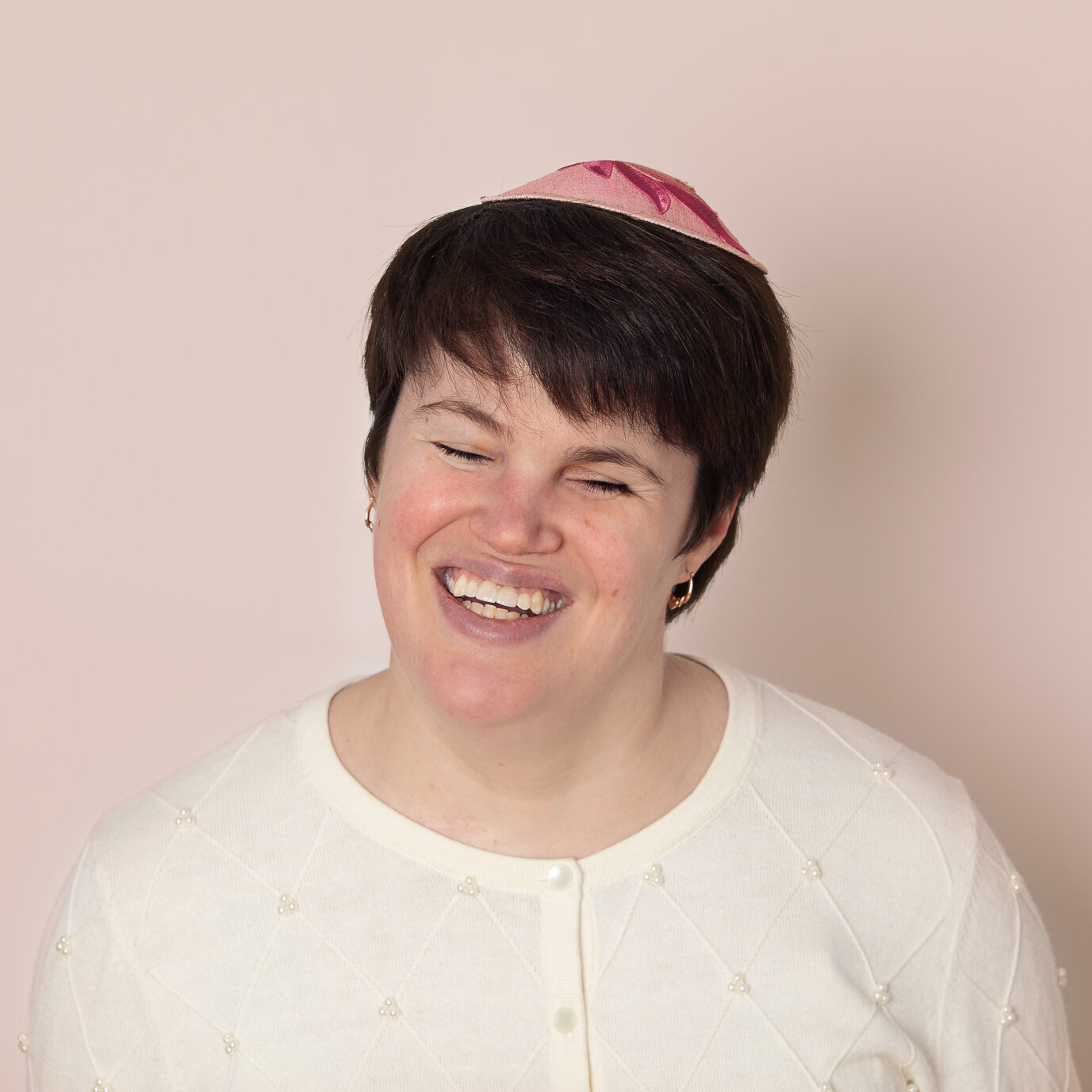I remember well the first time I tried to wrap tefillin.
I was in a Master of Arts program at JTS when someone kindly lent me their set after Shacharit, morning prayers, one day. I recall thinking to myself how mysterious and impossibly complicated they were. I knew the leather boxes or batim contained four passages of Torah—two from Devarim (Deuteronomy 6:4-9, Deuteronomy 11:13-21) and two from Shmot (Exodus 13:1-10, Exodus 13:11-16)—and that by binding tefillin upon the body, the wearer was binding themselves to TorahRefers to the first five books of the Hebrew Bible, the Tanakh, also called the Five Books of Moses, Pentateuch or the Hebrew equivalent, Humash. This is also called the Written Torah. The term may also refer to teachings that expound on Jewish tradition. Read more and to the Divine.
I have the unique experience of learning to wrap tefillin by other women. I recall vividly the frustration I felt as these women patiently and with immense kindness stood with me for as long as it took for me to put the tefillin on properly. Frustration rose and fell as I slowly got the hang of it. What once felt like an impossible chore—something I wanted badly but could never have—began to find its way into my muscles and bones, becoming a part of my embodied experience.
I began wrapping tefillin in 2010, at a time when there were very few resources available for women or others who wanted to explore this mitzvah for themselves who did not identify as cis men. I was extraordinarily lucky to be connected with the Women’s Tefillin Gemach. A gemach is a Jewish mutual aid society, typically providing financial or other loans. The Women’s Tefillin Gemach provided me with a set of tefillin I could try out for a specific length of time before buying them outright. It’s a wonderful option if you’re serious about the possibility of taking on the mitzvah of tefillin but either don’t have the funds or aren’t quite ready to take the leap.
Before we go on, we need to be very honest and transparent. I know many people experience a visceral discomfort with the intricacies of wrapping—how they feel upon the skin and look to others, what it is like to wrap oneself in Jewish holy objects derived from animal skins, not to mention their strong associations with masculinity and a particular kind of Jewish practice.
Tefillin are inaccessible for so many people. As a Conservative rabbi and lover of this mitzvah, I feel committed to changing that.
Tefillin are hard for folks for any number of reasons, including:
Gender: tefillin are worn only by men in most Orthodox communities. This social prohibition, though with limited basis in Halakhah still holds sway over many people, both inside and outside of those spaces. In Conservative/Masorti and traditional-egalitarian communities, adult Jews of all genders are encouraged to lay tefillin. Rabbi Pamela Barmash wrote a teshuvah passed by the CJLS in 2014 spelling this out more, affirming that Jews of all genders are equally obligated in mitzvot.
(See related: On Women and Headcovering and Tallit on the Bimah: Optional or Required?)
Concerns over animal-based products: Tefillin are made of leather, the parchment inside the batim is scribed on kosher klaph which is also derived from the skin of a kosher animal. Vegans, vegetarians, and others concerned with unnecessary suffering to animals have explored ways that tefillin can be made in the most ethical manner possible. I know this is an evolving conversation.
Financial barriers: Let’s be real. Tefillin are expensive. This is both because of the time and care required of the sofer/et or scribe and the procuring of kosher materials. There are different kinds of kosher tefillin offered at varying price points. I wear a pair of gasot tefillin which are incredibly durable, and I expect will last me years. If you really want to begin laying tefillin and purchase your own set, I encourage you to ask your local rabbi for recommendations or check out a resource like Stam Scribes, a collective of soferet and sofrim who scribe and sell tefillin to egalitarian Jews. Best to get a good, durable pair that will last you a good long while than a less expensive but easily pasuled (ritually impure) pair. I learned this the hard way!
You can also ask your local rabbi if they have extras lying around. It’s almost a guarantee that in a shul’s tallit closet, there will be barely used pairs of tefillin.
A Personal Reflection
Even in communities that encourage Jews of all genders to wrap, the act of doing so may be uncomfortable. It can feel hard to focus one’s mind and heart when becoming accustomed to the particular experience of wrapping tefillin.
There is something so challenging and beautiful about tefillin being an embodied mitzvah.
As a disabled person, mine is a body that never moves through public space unnoticed, a body that others project their fears onto, a body that many project their desire not to have anything to do with onto. Tefillin, for me is both profoundly religiously meaningful and subversive. Every weekday morning when I wrap the tefillin and say the blessings, I am not only affirming my kinship and covenantal relationship with the Jewish people and the Divine, but I am also affirming that my body is a body worthy of being bound to Torah.
In a world that affords us a very narrow space in which bodies are acceptable, mine can never fit the mold. This inability to be acceptable allows me a deep sense of freedom—a freedom to find my own path, my own way to honor and uplift my body and all bodies. Placing the tefillin upon my arm and forehead, feeling the contact between box and skin, I feel a cosmic, transcendent covenantal bond.
We live in a world now where Jews of all genders who wish to learn the exacting art of sofrut—scribing holy books and scrolls—can do so. I know many folks who are beginning this path, and it is tremendously amazing to me that we are here, now, in this place! May we continue to experience the flourishing of sofrut done by all who wish to take hold of this holy work regardless of gender!
I share my journey as simply a glimpse into my own experience and do so non-proscriptively. It is my hope that however we connect and practice, we find our way to that which enriches our lives, connects us to our tradition and allows us to feel a sense of being a part of that which transcends us. In times of trial and immense suffering, as well as at times of joy and celebration, anchoring myself daily through this mitzvah has allowed me to find a sense of grounding.
(See more: For more on how to wrap, check out @All Genders Wrap)
Tizku l’mitzvot!
Author
-

Rabbi Tuchman is a sought after spiritual leader and Jewish educator based in the Washington, DC area. She teaches Jewish contemplative and spiritual practices, in addition to consulting with communities and leaders on issues pertinent to disability inclusion.
View all posts http://contemplativetorah.substack.com/






